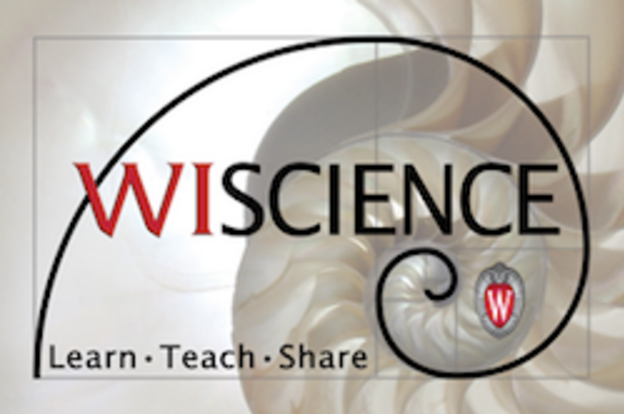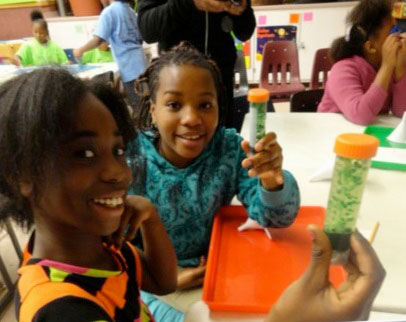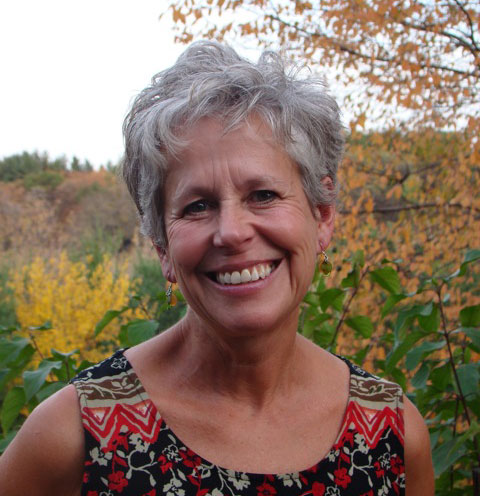Program Profiles
How do successful afterschool STEM programs do it?
These innovative afterschool programs offer impactful STEM programming to diverse populations. Read on to hear their advice for success and to learn about their program structure, evaluation results and partnership models.
The Adult Role Models in Science (ARMS) program, which was started in 1990, transforms science education on the local level by building creative community partnerships that leverage the expertise at the University of Wisconsin–Madison to a) build capacity for inquiry-based science education in schools and programs that serve K-8 students and b) cultivate adult scientific role models capable of engaging children in science.
ARMS is an initiative of the University of Wisconsin-Madison’s WISCIENCE—Wisconsin Institute for Science Education and Community Engagement—whose mission is to advance the teaching and learning of science on campus, in Wisconsin, and beyond by providing opportunities for educators and learners to connect, discover and innovate. ARMS is the Institute’s oldest and largest community outreach program.

ARMS currently provides afterschool programming at 35 sites in the Madison area, serving K-5 students. The number of children served at each site ranges from 8-20, and the total student population served is over 500 students annually. 70% of these students qualify for free/reduced lunch, and 65% are children of color. The City of Madison and the Madison School District help identify sites with the highest number of underrepresented minority students and the greatest need for enrichment.
Family science events reach over 300 families each year. ARMS trainings and courses reach approximately 60 afterschool staff, 75 UW–Madison students, and 30 other community volunteers and scientists annually. Programming for classroom teachers currently serves a total of 15 teachers at seven schools.
ARMS programming that directly serves K-12 children currently includes:
Afterschool Science Clubs: 35 clubs meet once a week for one hour during the school year at regular afterschool programming sites, such as schools and community centers. There are also approximately 10 summer clubs. Clubs are co-led by a trained volunteer and a regular afterschool staff person. At each session, students are actively engaged in the process of science or engineering.
Family Science Events: Family Science Nights/Days enable students to share their learning and become the “experts,” and when students see their parents learning along with them or showing an interest in what they have learned, the parents become “adult role models in science.” Events include interactive, hands-on presentations that engage the whole family in the process of science. There are approximately 12 events each year.
Middle School Science Symposium: Middle school students can share their work through the annual Middle School Science Symposium. Scientists and students from the university and science businesses mentor middle school students on research projects, preparing them to present at the symposium.

We choose a different theme each year for the clubs and events and find existing curricula to adapt or develop based on the needs and interests at each site. In the 2016-2017 year, our theme is water and we are using a variety of science and engineering activities related to this them in addition to local resources. Activities in the afterschool clubs build on each other, and students have the opportunity to share their work at Family Science Nights and the Middle School Science Symposium. We maintain a wiki for ARMS teachers and leaders that lists ideas and resources: sites.google.com/a/wisc.edu/arms.
ARMS builds capacity of educators by providing training and professional development within schools and afterschool programs.
Trainings and Courses: Multiple trainings are held each year for Middle School Science Symposium mentors, community volunteers and afterschool staff. Trainings build mentoring skills and help club leaders devise and lead science activities that are culturally relevant and age-appropriate. A popular service-learning course, Engage Children in Science, is offered to UW–Madison students. Undergraduates in the course each lead an afterschool science club and often stay with the program as volunteers after the course. Graduate students in the course partner wtih elementary school teachers to plan and lead innovative, inquiry-based science lessons in the school day classroom. This program called "ARMS Classroom Partners" helsp to connect afterschool educators with school day teachers. Each of the participating schools aldo has a "Scientist in Residence" and regular opportunities for school day and afterschool educators to meet and plan together.
We measure the effectiveness of science club leaders and the engagement of K-8 children in afterschool science clubs. In collaboration with education researchers, we developed a standardized process for documenting how leaders implement teaching strategies and how children engage in science. “Friendly Observers” (retired science teachers), who are trained using National Partnership for Afterschool Success (NPASS) protocol, observe science activities, noting strategies used by volunteers and teachers and engagement of children. They provide feedback to volunteers, teachers and program directors. In addition, UW service-learning students and participants in professional development complete evaluations and write reflections, and site directors complete surveys assessing impact on staff and children. Participants in a sample of clubs have been surveyed to measure interest and self-efficacy in science.
In 90-100% of observed club sessions, leaders engaged students’ prior knowledge, used age-appropriate questioning, gave clear directions, explained scientific terms, connected new concepts to things children were familiar with, engaged children in science process skills and assessed student understanding and engagement. Over 95% of site directors gave volunteers the highest ranking in actively engaging children in science.
All afterschool teachers who attended professional development and/or worked with a trained volunteer reported increased confidence and skills in leading science activities. Evaluations from the service-learning course show the same results for UW students.
The most recent club participant survey data show high interest and self-efficacy in science. Over 82% of students indicated that they looked forward to doing science, ‘quite a bit’ or ‘a lot.’ 75% of students exhibited fairly high levels of self-efficacy, based on overall survey scores.
Major funding sources include the University of Wisconsin Madison, WISCIENCE; Downtown Madison Kiwanis Club; and the Morgridge Fund for Community Service (through UW—Madison). The ARMS program is also supported by 21st Century Community Learning Center funds through one of our partner agencies—Madison School and Community Recreation.

The program is built on meeting identified community needs through strong partnerships. We don’t come in as university “experts” and tell practicing educators what they need and how to do things. We have made a long-term commitment to our partners, and we create a coalition of stakeholders to come up with collaborative solutions. Although ARMS reaches hundreds of kids each year, the focus of ARMS is training leaders—volunteers and afterschool staff—on how to work with elementary youth and how to facilitate age-appropriate, inquiry-based science activities. This builds our partners’ long-term capacity and facilitates real changes in science education opportunities for kids.
Most everyone who volunteers as a club leader benefits in multiple ways—this leads to greater sustainability as participation doesn’t drain human resources. Teachers gain professional development and don’t just have additional demands placed on them. Their jobs are made easier and more satisfying. The UW–Madison students gain a great service learning experience through leading an afterschool club and are getting academic credit for it. University scientists can show outreach work for their tenure packets or satisfy broader impacts requirements on grants. Science businesses can cultivate future employees and demonstrate community commitment. And everyone participates in active learning, meaning everyone learns by doing.
What were some of the challenges the program faced in its early stages?
Working with a variety of agencies and organizations with different structures, different ways of running afterschool programs was challenging. It is important to have written agreements that clarify roles and responsibilities.
Another early challenge was helping afterschool staff overcome their fears and lack of confidence in leading science.
What advice would you have for programs that want to integrate STEM?
There are excellent curricula and resources available. The challenge is implementation. Afterschool staff are interested and skilled in engaging youth, but need training and support to implement STEM activities in their programs. Fostering long-term relationships with those with expertise and enthusiasm for STEM and providing on-going training can help afterschool staff become motivated and skilled in leading STEM.
Where can afterschool programs find STEM expertise?
Universities, businesses and STEM-related agencies have people with expertise and enthusiasm and a tremendous amount to share with educators and youth. However, they need training in youth development and need a way to build relationships with educators. Scientists and teachers have a great deal to learn from each other and each has unique skills necessary to engage children in science and engineering. However, they can't do it alone. Staff with expertise in community engagement are required to work as “boundary spanners” between these two groups to make sure the efforts of scientists and engineers are appropriate and effective. The need for permanent paid staff to serve in this role is often left out of the equation for strengthening STEM education and is necessary for long-term change.
For more information, please contact Dolly Ledin, ARMS Program Director at daledin@wisc.edu.